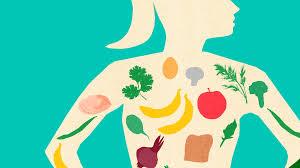Your metabolism
It is in every cell in your body. It refers to a series of chemical processes in each cell that turn the calories you eat into fuel to keep you alive.
The body's major organs — the brain, liver, kidneys, and heart — account for about half of the energy burned at rest, while fat, the digestive system, and especially the body's muscles account for the rest.
198
498 reads
CURATED FROM
Your metabolism starts slowing down at age 18, and other facts about a widely misunderstood process
vox.com
6 ideas
·3.11K reads
IDEAS CURATED BY
Wannabe explorer. Tv nerd. Communicator. All about healthy food and healthy living.
The idea is part of this collection:
Learn more about health with this collection
Different types of fasting
How fasting can improve your overall health
How to prepare for a fast
Related collections
Similar ideas to Your metabolism
Metabolism
It refers to the thousands of chemical reactions that turn what we eat and drink into fuel in every cell of the body. These reactions change in response to our environments and behaviors, and in ways we have little control over.
Metabolism is not a single thing that can be calibr...
Read & Learn
20x Faster
without
deepstash
with
deepstash
with
deepstash
Personalized microlearning
—
100+ Learning Journeys
—
Access to 200,000+ ideas
—
Access to the mobile app
—
Unlimited idea saving
—
—
Unlimited history
—
—
Unlimited listening to ideas
—
—
Downloading & offline access
—
—
Supercharge your mind with one idea per day
Enter your email and spend 1 minute every day to learn something new.
I agree to receive email updates

